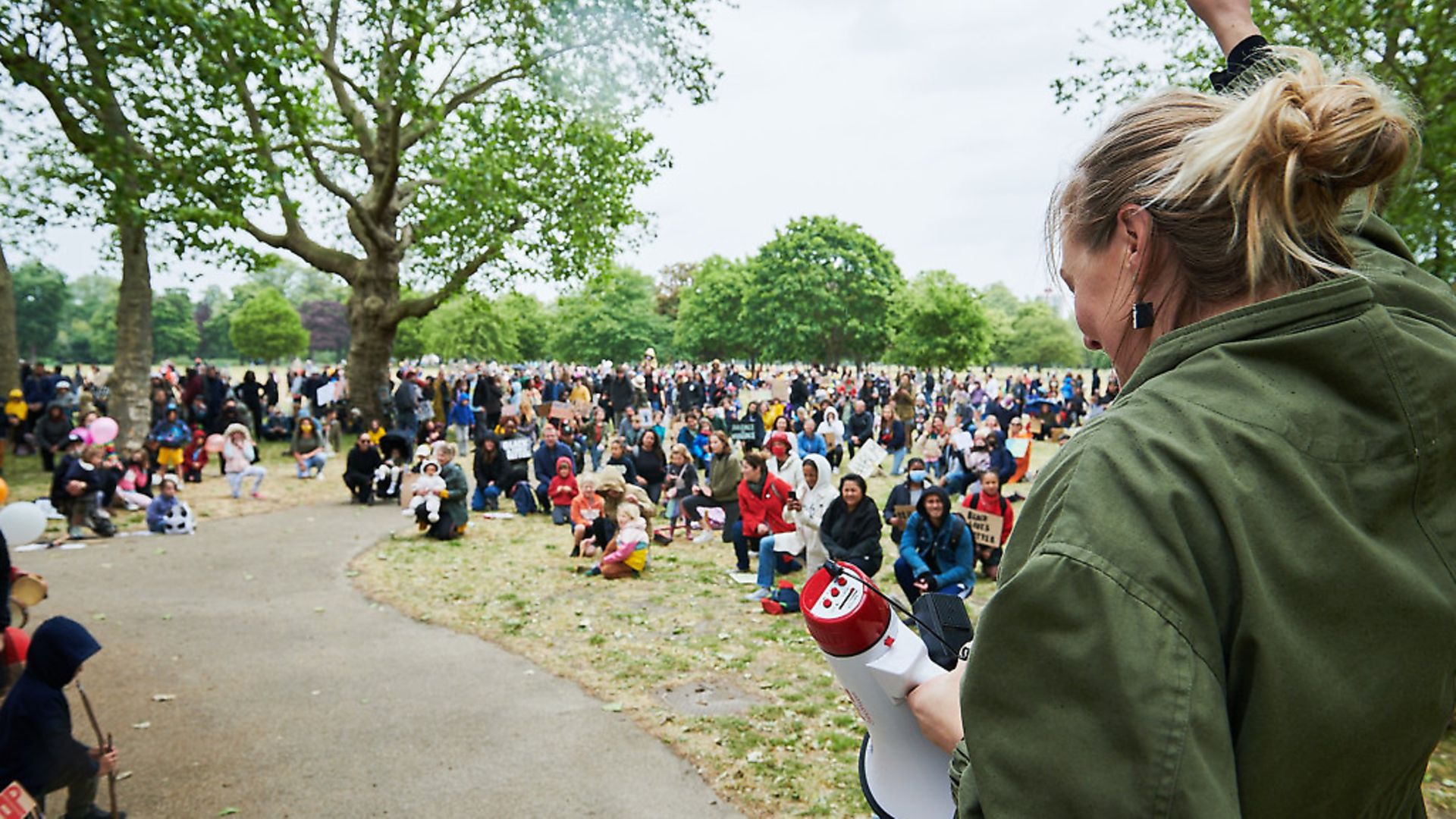
Hot and bothered as a Covid patient, London is split between lockdown, protests, and parties. WILL SELF explores what it is that is pulling the city apart, and what keeps it together.
It was sultry on the Wednesday night, and there were helicopters up in the vicinity – two or three that kept circling, hovering, then circling again. ‘There has to be something going on,’ said my partner, as we got ready for bed – but I only muttered to the effect that, living where we did you had to expect a fair amount of this sort of thing: we’re only a mile from the US embassy at Nine Elms, and during the Black Lives Matter protest ten days earlier, the skies had been thronged. But anyway, if you follow Peter Ackroyd – whose magisterial London, the Biography proposes the city as strange sort of bricky entity – civil disturbances become just one of the ways it acts out its immemorial passions: dividing ordinary Londoners into passive audiences and active mobs, with the authorities playing the role of heavy-handed ushers.
Ackroyd also thinks the city possesses a sort of phrenology; whereby the bumps and depressions of certain districts indicate their enduring character. If this were true, the Metropolitan Police would be wise to get a better ‘feel’ for this area than they currently do: on the Thursday morning we found out what the ‘something going on’ had been: a block party at Overton Road – a mile in the opposite direction, towards Brixton – where hundreds had gathered to drink, smoke, and dance to sound systems. While breaking it up 20 officers had been injured. Midway between us and there lies Normandy Road, where, in 1985, during a heavy-handed raid in search of her son, the police shot Dorothy Groce, leaving her paralysed – and sparking off three days of serious rioting.
This was the second incident of major civil unrest the district had seen in four years – and the second time barricades had gone up on Brixton Road, and Molotov cocktails had been thrown. The summer of 2020 is already hot and bothered, as if all of south London were a Covid-19 patient – if Dame Cressida Dick, the Metropolitan Police commissioner, wants to get through it without more of her officers coming under attack, she and her local commanders need to reach out to the community and gain its trust, rather than acting like some Vietnam era ‘air cav’ unit that loves the smell of napalm in the morning.
Its trust or our trust? After all, I’m about as likely to attend a block party as I am a Scientology convention – and I fear civil disorder quite as much as any other ageing middle class person, so surely I owe the police my support as a matter of course? I was pondering all of this on the Friday, as I cycled still further south to Brockwell Park. Behind the hill that forms the park’s apex, there’s a small valley of rougher grassland. On a hot summer’s day, you can lie here in a mini-blizzard of thistledown and butterflies, contemplating the horizon, which on all sides is formed by trees and shrubbery – the only evidence of the surrounding city being the slim Neogothic spire of Holy Trinity, Tulse Hill. Anyway, I was enjoying this sylvan scene when I was approached by a young man, who’d recognised me – and who also knew I taught at Brunel University.
George Nelson is an alumnus – but graduated in film and English literature before my time. A curator, lecturer and photographer, he’s spent the last few years putting together Scenes, a beautifully-presented photo essay on the alternative jazz scene in London. George plunked himself down beside me, and we wiled away 20 minutes or so putting the world to rights. We talked about the goings on at Overton Road, and the BLM demonstrations – and he said he found it pretty odd when people felt they had to tell everyone what their reading lists were via social media. Obviously the pandemic has hit George pretty hard: his photography depends – at least in part – on precisely those scenes typified by social proximity rather than distance.
In his introduction to Scenes, George writes: ‘One reason behind documenting London’s current (jazz) scene was a feeling that the press coverage surrounding it was a little light on the nuance always present in these things’; elsewhere he muses: ‘can the divides that exist within the scene be drawn along race or class lines?’ Wise words – and they made me think that as it is to the alternative London jazz scene, so it is to the culture more generally: press coverage of racial and class divisions is almost always lacking in nuance. The most obvious form this takes is that everyone who’s quoted or otherwise identified in a given article, is described in terms of their race, ethnicity or heritage – the implication being that this means they are necessarily partisan.
I bought a copy of Scenes from George – who, like all good freelance cultural workers, had some of his own product to hand. You, too, can buy one at his website: georgenelsonphotography.com. Jazz can be viewed as a contested cultural site, subject to divisions and appropriations – but looking at George’s photos I just see musicians, playing joyfully together.










